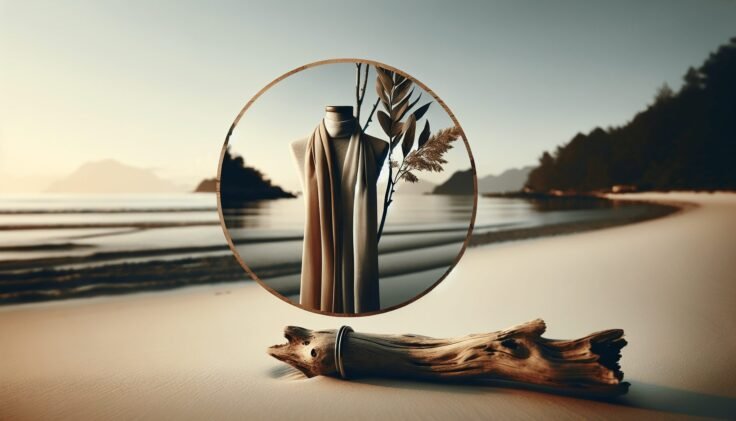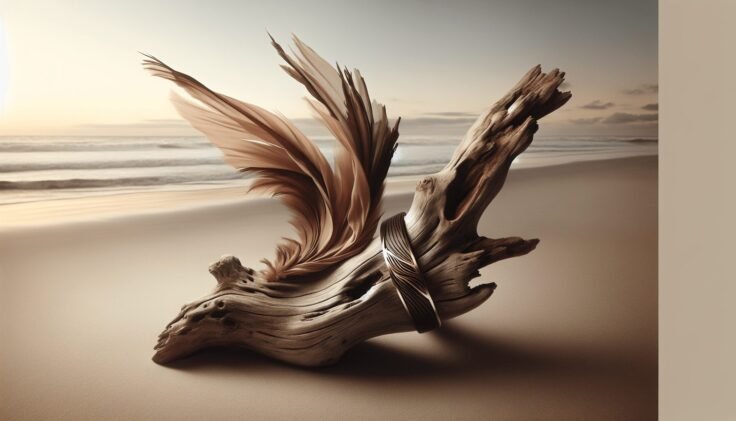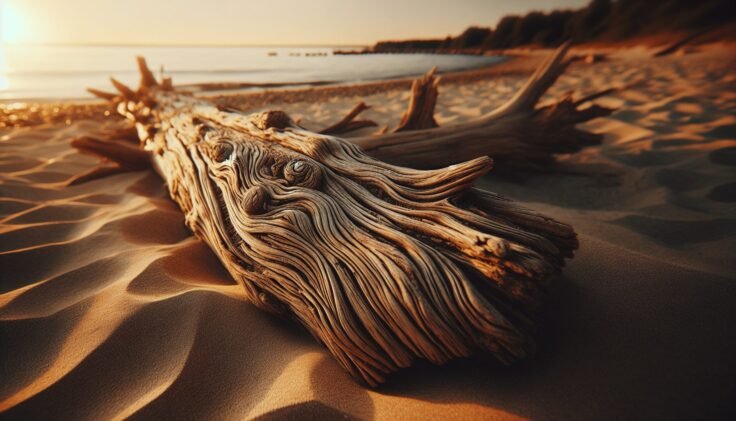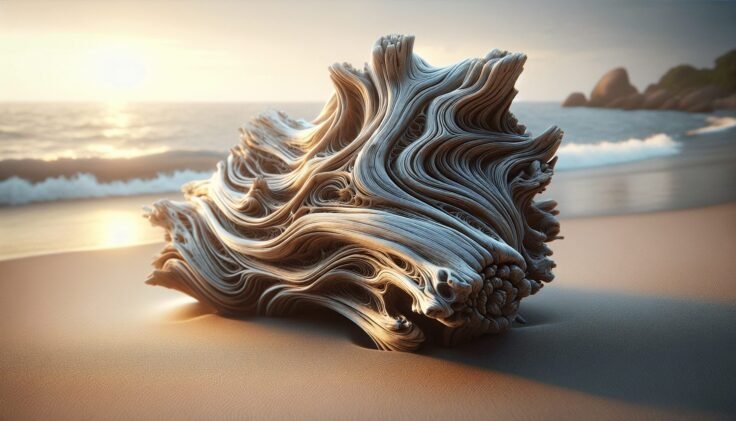Have you ever wondered how a piece of driftwood can merge with the world of fashion to create something truly magical? It’s fascinating how nature’s artistry finds a way to influence and inspire high fashion. Driftwood, with its unique textures and mesmerizing patterns, can propel the fashion editorial world into a new realm where nature and style walk hand-in-hand.

Understanding Driftwood’s Charm
In the world of fashion, inspiration can arise from the most unexpected places. Driftwood, with its weathered look and organic beauty, has long captivated many artists and designers. This unassuming material, shaped by waves, wind, and time, carries with it stories of its journey from forest to ocean and back to land.
By embracing driftwood as a muse, fashion editors and designers honor sustainability and nature’s artistry, converting raw beauty into sophisticated style. The distinctive appearance of driftwood—grainy, textured, and uniquely formed—serves as a visual metaphor for resilience and elegance in fashion.
The Journey of Driftwood: From Nature to Catwalk
To genuinely appreciate driftwood’s allure in fashion, it’s helpful to understand its journey. Driftwood is essentially any piece of wood that has been washed ashore by the action of winds, tides, or waves. As it travels, it experiences various transformations, developing smoothness and different hues—qualities that fashion connoisseurs are keen to replicate or draw inspiration from in their creations.
Designers often look to these natural transformations when cultivating unique textures in fabrics or structuring garments that reflect the organic, unrefined grace of driftwood. This journey from nature to fashion is about creating a narrative that celebrates raw and untouched beauty.
Driftwood in Fashion Styling
Driftwood’s role in fashion extends beyond mere aesthetics. It also influences the principles of sustainable fashion and encourages a focus on ethical design practices.
Incorporating Natural Aesthetics
The fashion industry constantly seeks innovation, and driftwood’s natural aesthetics offer a compelling resource. Designers incorporate earthy tones and patterns that mimic the swirling grain of driftwood, promoting an understated elegance that is both raw and refined.
Think of driftwood-inspired ensembles that capture the essence of muted sea tones, layered textures, and asymmetrical lines. These design elements not only add depth but also endow each piece with a narrative quality, making the garment as much a work of art as it is an article of clothing.
Championing Sustainability
In an age where sustainability is not just preferred but necessary, driftwood-inspired fashion becomes particularly relevant. It challenges the industry to consider where materials come from and how they impact our environment. By choosing to incorporate the motif of driftwood—representative of nature’s recycling and rebirth—designers are making a statement about the importance of sustainability.
The driftwood fashion editorial promotes second-hand materials, upcycling trends, and environmentally conscious fabrics, encouraging the industry to redefine luxury as sustainable, not wasteful.
The Role of Editorials in Fashion
The concept of a fashion editorial is vital to communicating a brand’s philosophy and style. It is a curated message that speaks through visuals and narratives, reaching diverse audiences.
Crafting a Narrative
Every successful fashion editorial begins with a powerful narrative. Driftwood fashion editorial, in this sense, constructs a tale of nature’s resilience and beauty, mirrored through unique, wearable art. By highlighting the raw and weathered qualities of driftwood, editors tap into a narrative of hope and transformation, offering a glimpse into a world where nature and fashion are seamlessly intertwined.
These stories aren’t just about clothing; they’re about transporting the viewer to a place or state of mind where they can feel connected to both fashion and nature. The editorial acts as a bridge between the allure of the natural world and the creativity fostered within the fashion industry.
Inspiring Through Imagery
Imagery in a fashion editorial is not just about showing off clothes—it’s about evoking emotions and offering new perspectives. In a driftwood-themed editorial, photographers capture the stunning interplay of hardened, yet vulnerable, natural forms with soft, haute couture designs. This juxtaposition serves to inspire viewers, enabling them to visualize themselves as part of nature’s narrative.
These visuals thread together a tapestry of raw beauty and sophisticated style, with each piece and photograph telling a part of the overall driftwood story.
Driftwood-Inspired Fashion Trends
The influence of driftwood in fashion goes beyond the editorial; it manifests in trends that emphasize natural beauty and simplicity.
Earthy Tones and Textures
Driftwood is characterized by its subdued, earthy tones—everything from dusky grays and bleached whites to deep, rich browns. These colors translate into fashion trends that embrace simplicity and elegance, providing a palette that is refreshing and timeless.
Billowing fabrics with textured finishes, and minimalist pieces that focus on form over embellishment, are at the forefront of this driftwood-inspired movement. These styles echo the organic forms and natural wear of driftwood, offering comfort without compromising on style.
Asymmetry and Organic Shapes
Much like driftwood itself, which rarely adheres to straight lines or symmetrical forms, driftwood-inspired fashion often features asymmetrical designs. These garments catch the eye with their unconventional silhouettes, bringing an element of surprise and creativity to the wearer.
This trend isn’t only limited to clothing; accessories echoing the twisted, irregular shapes of driftwood also play an essential role. From jewelry that mimics driftwood’s knots to handbags with wavy contours, these pieces add an element of the sea to everyday fashion.

Bringing Driftwood Fashion Into Your Wardrobe
Incorporating driftwood-inspired elements into your wardrobe can be both refreshingly stylish and environmentally conscious.
Choosing the Right Pieces
The first step in adopting driftwood fashion is recognizing the key elements: natural tones, textures, and asymmetrical lines. Look for pieces that combine these qualities to achieve a balance that is modern yet timeless.
Consider updating your wardrobe with a few standout pieces that can be easily mixed and matched. A textured sweater in driftwood gray or a pair of asymmetrical earrings could serve as a starting point. Layering is another technique that works well, allowing you to experiment with various textures and shapes to achieve a driftwood-inspired look.
Caring for Driftwood-Inspired Garments
Natural and textured garments often require specific care to maintain their beauty. Fabrics that mimic driftwood’s weathered finish may be more delicate, requiring gentle washing and storage. Always follow care instructions to prolong the lifespan and quality of your pieces.
Sustainable fashion is about preserving as much as it is about repurposing. By tending to your wardrobe with care, you’re embracing both the aesthetic and philosophical aspects of driftwood fashion.
Conclusion
Driftwood fashion editorial is a celebration of nature’s beauty and the fashion industry’s creativity. By exploring the stories told by driftwood, designers and editors are redefining luxury through the lens of sustainability, natural aesthetics, and innovative styling. This approach not only delivers captivating designs but also encourages a more thoughtful and environmentally-minded way to engage with fashion.
By inviting driftwood fashion into your life, you are not only embracing an alluring aesthetic but also contributing to a narrative that honors the Earth’s natural resources and the art they inspire. From sustainable materials to designs that reflect nature’s handiwork, driftwood fashion is a testament to the timeless elegance that can be found in simplicity and authenticity.








